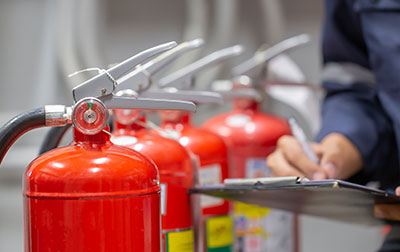Unclassified buildings: Why fire protection still matters
 Many people mistakenly think that fire safety measures are only necessary for areas with dangerous materials. However, in buildings that lack flammable or explosive materials (aka unclassified buildings) the risk of fire can still be high due to unexpected hazards like electrical faults, improper equipment wiring, or common materials exposed to heat from space heaters or radiators.
Many people mistakenly think that fire safety measures are only necessary for areas with dangerous materials. However, in buildings that lack flammable or explosive materials (aka unclassified buildings) the risk of fire can still be high due to unexpected hazards like electrical faults, improper equipment wiring, or common materials exposed to heat from space heaters or radiators.
Fire protection and detection requirements are not limited to hazardous areas. They are critical for life safety, property protection, and compliance with regulations and standards from organizations like the International Electrotechnical Commission (IEC), American Petroleum Institute (API), and National Fire Protection Association (NFPA). Additionally, for industrial buildings like solvent extraction, even if the area is unclassified (meaning it lacks flammable or explosive materials), the risk of fire remains high due to the processing of combustible liquids.
Understanding what unclassified and classified means
According to IEC 60079, in areas where dangerous quantities and concentrations of flammable gases or vapors may be present, measures need to be taken to reduce the risk of explosion. As per API 505, electrical installations in areas where flammable liquids, gases, or vapors are produced, processed, stored, or otherwise handled can be suitably designed if the locations of potential sources of release and accumulation are clearly defined. Section 1.1 of NFPA 499 provides information on the classification of combustible dusts and hazardous (classified) locations for electrical installations in chemical process areas and other areas where combustible dusts are produced or handled.
As per API 505, the interior of a building (or similar area) that does not contain a source of flammable gas or vapor can be designated as suitable for electrical equipment for unclassified locations.
Why fire protection is necessary in unclassified buildings
An unclassified building is not free from fire risks. Ordinary combustibles such as paper, wood, and furniture, or industrial buildings that handle Class III combustible liquids, typically do not produce vapors in quantities that require electrical area classification. However, if these materials are processed above their flashpoint, they will release vapors and can then be categorized as a classified location.
Some reasons why it is necessary to have fire protection and detection in buildings are:
- Life safety: Ensuring the safety of occupants and temporary personnel (maintenance) is among the most important reasons to install fire protection and detection systems. These systems ensure early detection, suppression, containment, and evacuation measures are in place. Additionally, they help prevent fire from spreading to nearby facilities.
- Insurance requirement: Insurers often require fire protection systems as part of risk management, even in low-hazard buildings.
- Business continuity: Protection systems help prevent disruptions to business operations by quickly addressing fire incidents, ensuring that the building can continue to function with minimal downtime.
- Unforeseen risks: Ordinary buildings can become hazardous due to unexpected factors such as the temporary storage of flammable materials, electrical faults, or HVAC malfunctions.
Key takeaways
Many believe fire protection is only necessary for classified buildings. However, as per IEC60079, NFPA, and API 505 standards, it is recognized that the aim of classification is to ensure the proper installation of electrical equipment in vapor or dust explosive areas. It is not intended to define the appropriate fire protection and detection devices for those areas. Regardless of its electrical hazard classification, every building or area carries unique fire risks. Consulting a partner such as Hatch, which has unmatched expertise in conducting regular fire risk assessments and ensuring compliance with fire and safety codes, is essential for specifying proper fire protection and detection measures.
